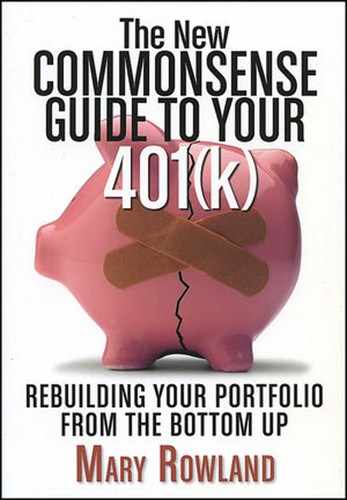WHEN YOU RETIRE with a lump sum of money in your 401(k) plan, it belongs to you. Whether it is $20,000 or $1.4 million, you are entitled to take it home with you. If you take it out of your 401(k) account and deposit it in the bank, though, or, worse yet, spend it, you will owe taxes on all of it. Remember when we talked about the government's role in 401(k) plans? This is what the government has been waiting for: The Internal Revenue Service (IRS) gets the payoff for all those years of tax deferral when you take the money out. You have control over when that tax hit will happen. If you take a lump sum of $1 million, roughly one-third to one-half of that money will go to taxes.
This is what you do not want to do. What are your other options? Some taxpayers may want to consider leaving the money with their employer, which I will discuss in the following section. But most taxpayers will probably want to roll their 401(k) money over into an Individual Retirement Account. This preserves the tax-deferred status of the money until you begin making mandatory withdrawals from the account at age 70½.
Advisors typically tell plan participants not to combine the rollover money with traditional Individual Retirement Account (IRA) money because the traditional money would "taint" the 401(k) money so that it could no longer be rolled into another qualified plan at another employer. Instead, you should use a separate IRA, called a "conduit IRA," for the money from the qualified plan. That's because the government has sometimes taken the position that you cannot roll over non-qualified funds to a new employer. Although this rule is not as firm as it once was, the best advice is still to keep the employer money separate. We never know when the rules might change and it's always best to be flexible.
One advantage of putting it in an IRA is that the money is no longer off-limits to you. You cannot borrow money from an IRA. But if you are over 59½, you can tap into the money whenever you like, paying tax on it as you withdraw it. For many Americans, the chunk of money from their retirement plan represents the biggest asset they have. If that describes your situation, and you have little investing experience, either do some research or get some help. By help I mean a good, independent financial advisor who will take your entire financial situation into account before dispensing advice, not a stock or bond or insurance salesman. The fact that baby boomers are rolling over big 401(k) account balances as they retire or leave their jobs is not a secret in the financial community. Expect to have people preying on you and your money. I would not accept advice from anyone who contacted me from a list of retiring employees and offered "help" with important money decisions. What you do not need at this point is a Bernie Madoff, the "investment guru" whom I discussed at the beginning of the book who admitted that he lost billions of investors' dollars because he never even invested them but rather spent them or sent them off as returns to other investors.
Investing the money yourself is possible. You need three things. First, you need an asset-allocation model. That's a plan for how you will split your money between different types of investments like stocks, bonds, and cash. Second, you need to choose individual securities or exchange-traded funds (ETFs) or mutual funds to build your portfolio. And third, you need the discipline to sit tight through thick and thin.
The best way to fritter away your life savings is by tinkering with your investment mix every time you read a newspaper or magazine story or investment advice on the Internet. If you plan to invest on your own, you need some kind of model such as those provided by www.morningstar.com, www.financialengines.com, or numerous other financial planning Web sites.
Many of the target-date funds discussed earlier in the book were designed to do this management job for you, shifting assets to more conservative investments as you age. The evolving investment mix is referred to as the glide path of that fund. If you've been happy with the performance of your target-date fund, you may wish to do more research on it and see what its objectives are and whether it might suit you in this transition phase of your life. If a target-date fund is well and carefully managed, it can provide you with a managed portfolio in one fund. Many experts I interviewed—such as Ted Benna, the father of the 401(k) plan—believe that the target-date funds of the future will provide the best option for many investors. John Cammack, head of third-party distribution at T. Rowe Price, tells me that many companies that offer target-date funds allow the plan participant to leave the money in the fund to continue to grow and be managed during retirement.
